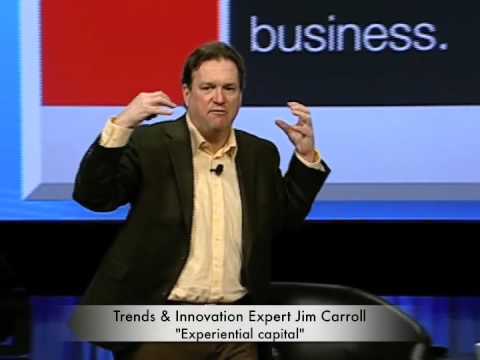Is your organization getting a tad stale? Try rejuvenating staff by prescribing a dose of newfound creativity – through some innovation oxygen!
When my good friend Scott Kress summited Mount Everest two years ago, he used a little bit of oxygen for the final push. Many climbers do — sometimes you need the extra energy to accomplish something massive! (Scott’s also a speaker, and has a great stage story to tell! When he summited the highest peak in Europe last year, he ended in a hi-jacked Russian plane!)

So it is with innovation — sometimes you need some help to accomplish great things. Here are some thoughts on how you can kick up your innovation efforts a bit more. Most importantly, the idea is that you can generate a little innovation oxygen by investing in some experiential capital!
What’s the use of innovation oxygen?
It is no secret that we are in an economy that has become far more hurried, complex and uncertain. Things are changing at a furious pace out there – from the products we are selling, to the markets we are selling to, to the attitudes of the customers that we are dealing with. Not to mention challenges with business models, marketing, branding, customer service, new forms of competition — and well, just about everything else!
Faster is the new fast!
In such an environment, a constant, relentless focus on innovative ideas might be the key to helping deal with rapid change. And through innovation, you may discover new opportunities.
This is the perfect time for every organization to put in place what I call “innovation oxygen.” This involves establishing a culture where everyone is actively encouraged to test a new idea.
In other words, everyone needs to inhale.
Oxygen. Innovation oxygen. Breathe it in deeply!
How do you do this? Several ways!
Banish complacency
Start out by banishing forever one of the worst phrases ever to be used in the corporate setting: “We’ve always done it that way.” Let go of the past. Things are different today, and will be far more different tomorrow. Constant, relentless change with markets, products, technology, customer behaviors and attitudes is the new reality.
Trying to go forward by doing what you’ve done in the past, results in being blind about potential opportunity. Don’t let complacency drive your agenda.
Put an alternative culture in place – one that encourages the use of the phrase, “Why not try doing it this way?” If you did things in a certain way in the past and it isn’t working as well as it used to, then do something completely different. See if it works.
Learn from it if it doesn’t, and move on to something new again. Try ten different approaches, and maybe you’ll find one that is effective. Throw out the other 9, and give yourself marks for innovation.
Take risks, reward failure
Of course, you can’t do this if your corporate mindset is one that discourages risk-taking. I’d suggest that to get into innovation mode, you should put yourself back in the mindset that existed before the current economic downturn.
Back then, it seemed that almost anything was possible, and everyone was willing to go out on a limb to try something new.
That’s no longer the case today. The challenges with the economy have had a huge impact on our willingness to try new ways of doing things.
Indeed, it’s fair to say that the climate towards risk taking and innovation has become very negative. After all, who would dare to stick out their neck today when they’re terrified of losing their job? Everyone is hunkering down, in survival mode.
Such an attitude will certainly help to kill an organization before the recovery even begins!
Bring back the courage to innovate.
Otherwise, current attitudes will settle in like a wet sponge, smothering any chance for innovation. Explore new ways of dealing with customers, particularly around social networking. Continue to examine methods of building sustainable customer relationships and loyalty. Return to experimenting with leading edge technology that might help to encourage new methods of building or enhancing brand image.
Whatever the case may be, keep trying out new approaches to do business, and reward those staff members who are willing to experiment and try new ideas.
Deal with the reality of aggressive indecision
Anyone involved in business has come to realize that over the last several years, it has become more and more difficult to close a deal. Massive indecision has come to be the rule, not the exception. And you can expect that to be a long-term reality, so adjust your plans accordingly.
The fact is, people have decided not to make decisions – and they like it! This has taught them something – they can hold off on deciding until the very last minute. The impact is rather challenging. It means is a business cycle that increasingly relies on long lead times, with sudden and instant short-term decision horizons.
Are you in sales? Here’s the new reality — you will find that your prospects will keep putting you off, and then one day will call, breathless and in a rush! There’s a decision to be made tomorrow morning, you are told. They need a revised proposal by 9am, and they need you to attend the meeting.
Oh, and you’ve got to be able to address multiple different product scenarios that haven’t been talked about before!
Can you respond to such a situation? Do you have a culture that would let you instantly jump in and reconfigure a deal? Can you pull together the information that would be necessary to support your presentation?
In retrospect, the need to be in an innovative frame of mind becomes obvious – critical, in fact. This new world can present a big shift in the approach that needs to be taken by your team.
Executives must constantly probe and learn how to deal with a business environment in which aggressive indecision is driving the decision making process.
Encourage frivolous education and promote offbeat time
To get into a frame of mind of acting fast, everyone needs to be able to learn a lot, very quickly. One way of doing that is by encouraging people to “waste” time. That’s right – I really recommend that as a business strategy.
How can people understand the high velocity change in markets, business models, competitive challenges, the emergence of new means of marketing and branding, and all kinds of other issues, if they are restricted to formal education programs? How can they learn about the new products that they need to sell when those products are coming to market so quickly? How can they learn new methods of dealing with a customer by taking an in-house course that was developed over a year ago, when the market was completely different from today?
That’s where frivolous education comes in, as a complement to traditional, formal corporate education programs.
Why not establish some “playtime” with your sales force, with the purpose being to try out a multitude of new technologies: encourage browsing through industry magazines, surfing the Web for market research, etc… Such activities may help bring understanding to how the customer is changing. So in fact, what may appear to be “wasting time,” really is not so.
Set your sales force out to do frivolous activities with a goal in mind – to measure customer service, examine competitive activities, take a look at new products, or simply come up with some innovative, new ideas that might help them sell more. Maybe you’ll get some unique insight that doesn’t come from your traditional educational programs!
Destroy organizational sclerosis
It’s been said before, but needs to be said again – hierarchy is the enemy of innovation. Everyone knows that the biggest challenge in many organizations are uncommunicative departments, and a culture that doesn’t promote openness. To improve the ability of an organization to innovate, communication barriers need to be broken down.
It seemed that when new technologies appeared on the scene in the 1990’s, that there were vast new opportunities to destroy “organizational sclerosis.”
And yet now, this culture of open communication is slowly being destroyed, as companies come to discourage frivolous employee communications. Jokes are frowned upon, and political correctness has become stifling.
This indictment of open communication impairs the very ability of the organization to encourage a culture of knowledge exchange, often critical for understanding how markets and customers are changing.
We need to continue to encourage employees to communicate as much as possible, however frivolous. Do this, and you’ll find that the culture of innovation opens up too.
Invest in experiential capital
In a world in which business models, methods of customer interaction, and other fundamentals are changing overnight, it’s critically important that an organization constantly enhance the skill, capabilities and insight of their people.
They do this by constantly working on projects that might have an uncertain return and payback — but which will provide in-depth experience and insight into change.
It’s by understanding change that opportunity is defined, and that’s what experiential capital happens to be. In the future, it is one of the most important assets that you can possess.
Invest in experiential capital, and that’s where you’ll find your innovation oxygen.





GET IN TOUCH
Jim's Facebook page
You'll find Jim's latest videos on Youtube
Mastodon. What's on Jim's mind? Check his feed!
LinkedIn - reach out to Jim for a professional connection!
Flickr! Get inspired! A massive archive of all of Jim's daily inspirational quotes!
Instagram - the home for Jim's motivational mind!